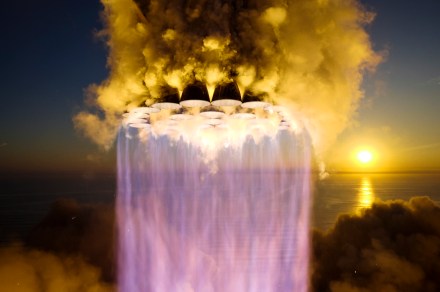

The launch tower is one place you definitely would not want to have been during Saturday’s launch of SpaceX’s Super Heavy rocket and Starship spacecraft, collectively known as the Starship.
With 17 millions pounds of explosive thrust blasting from its 33 Raptor engines, anyone watching the dramatic launch from that location would’ve been pulverized, incinerated, and obliterated, though possibly not in that order.
Instead, SpaceX stuck a remarkably robust 360-degree camera on the tower, enabling space fans to enjoy the launch of the most powerful rocket ever built from close up without having to experience all of the heat and force that went with it.
Stick on a VR headset and marvel at the sight of the 400-foot-tall Super Heavy booster and Starship spacecraft as it began its spectacular climb from the launchpad in Boca Chica, Texas.
Alternatively, watch it on a smartphone or PC and explore the scene from all angles as the rocket’s engines blast the booster toward space.
“This 360-degree view comes from the top of the launch tower at Starbase in Texas, providing a front row seat to watch liftoff of the world’s most powerful launch vehicle ever developed,” SpaceX said in a message accompanying the video, which it posted on Tuesday.
The footage was clearly a hit with space fans. “This is absolutely breathtaking,” one wrote in the comments. “I have watched it at least 10 times in slow motion too. Looking in every possible direction. Taking a sneak peek into the tower facing away from the rocket as it launches gives you the feeling you are standing just right there in the tower. Truly amazing!”
Another suggested it “might be the coolest rocket 360 video I’ve ever seen.”
SpaceX said the second integrated flight test of the Starship achieved a number of major milestones, including the successful deployment of all 33 Raptor engines on the Super Heavy booster and, for the first time, completion of a full-duration burn during ascent.
The Starship also achieved stage separation for the first time, though both the first and second stages exploded soon after.
“What we did with this second flight will provide invaluable data to continue rapidly developing Starship,” SpaceX said.
When fully ready, the Starship is expected to fly crew and cargo to the moon, Mars, and possibly beyond.
Editors’ Recommendations






